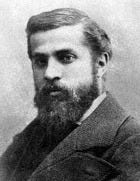Dear friend,
For the last several months, I’ve been inspired by ‘an old friend,’ a person who has fascinated me since I first saw his work; Antoni Gaudí. Considered one of the most important architects and minds in history, Gaudí and I seem to share more in common than I’d initially realized!
Because he’s been inspiring me, I’d like to share some of his story with you.
While other children spent their time out and about playing, Antoni Gaudí often stayed home due to rheumatic1 health issues. He developed into a quiet and introverted personality, content with staring for hours at Nature, studying its beauty. This hobby would forever inform his imagination.
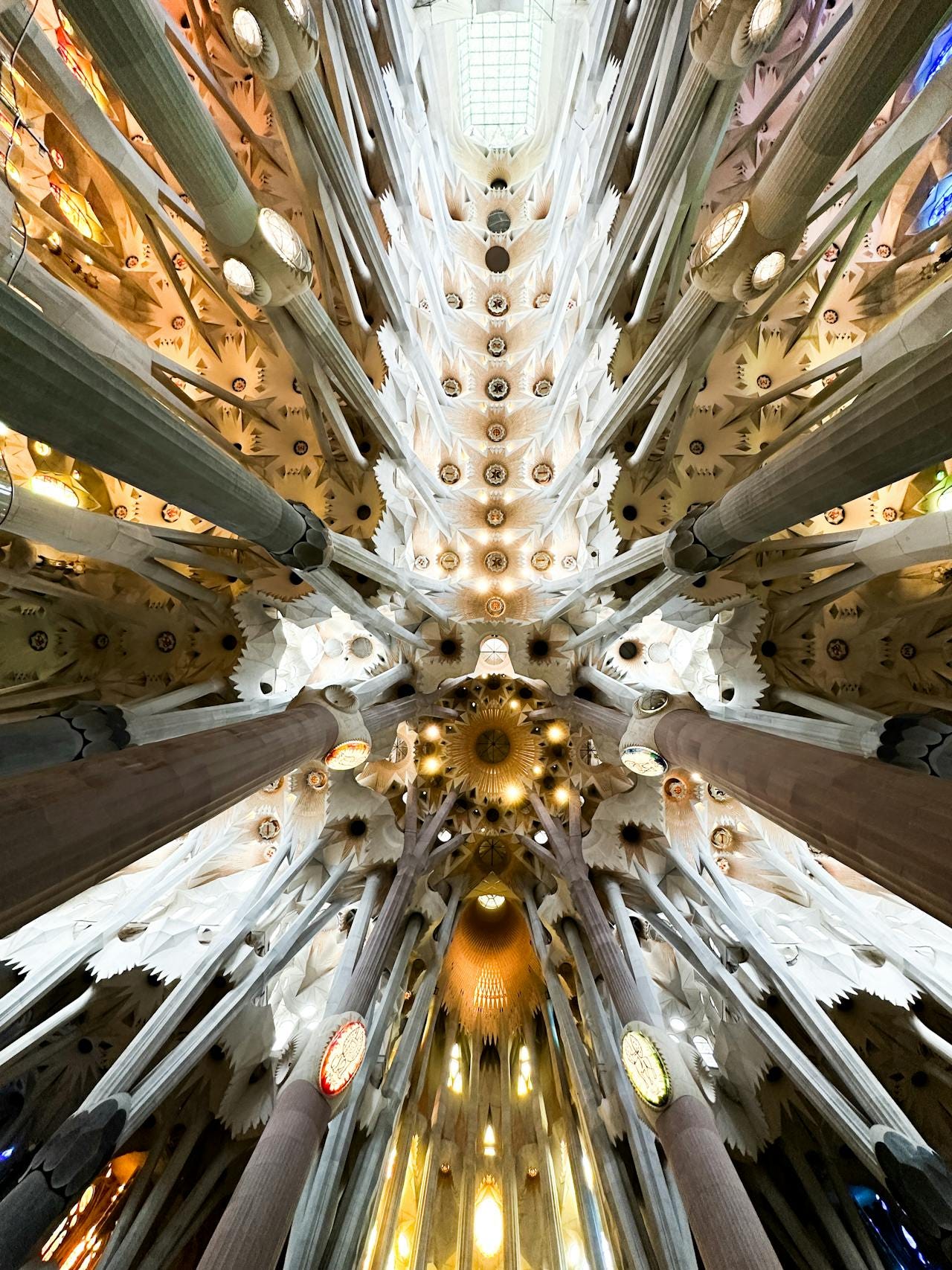
As he grew older, many mistook Gaudí’s reserved behavior for arrogance, but the persons with whom he spent significant time understood his humility and depth of spirituality. As a young man, he adopted a vegetarian diet. He was proud of his Catalan heritage and language, and was devoted to his Catholic faith — even participating in a movement to turn an abandoned monastery into a utopian community, inspired by the earliest Christians. The project was ironically foiled by war.
Conscripted into military service, Gaudí spent most of it on sick leave and threw himself into his education — although he admitted to being a ‘poor student.’ He preferred intense study outside the classroom getting lost in a book, attending artistic performances, learning a new skill or craft, and observing his mentors on-the-job as a draftsman for construction projects.
When Gaudí graduated, his school director said:
“We have given this academic title either to a fool or a genius. Time will show.”

On top of war, chronic illness, unrequited romantic interest, and surviving a cholera epidemic, Antoni Gaudí lost two siblings as infants, lost both his mother and elder brother Francesc in 1876, his sister Maria three years later, his father, and his only niece Rosa, as well as mentors and close friends.
Despite such immense personal loss, Gaudí now has several architectural works listed as UNESCO World Heritage Sites. His style is a love letter to Mother Nature, utilizing Her geometric structures which strike the common observer as entirely odd for a building, but are in fact exquisitely sturdy and practical. He loved colors and shapes, often incorporating mosaics made of broken, leftover tiles into whimsical and majestic beauties.
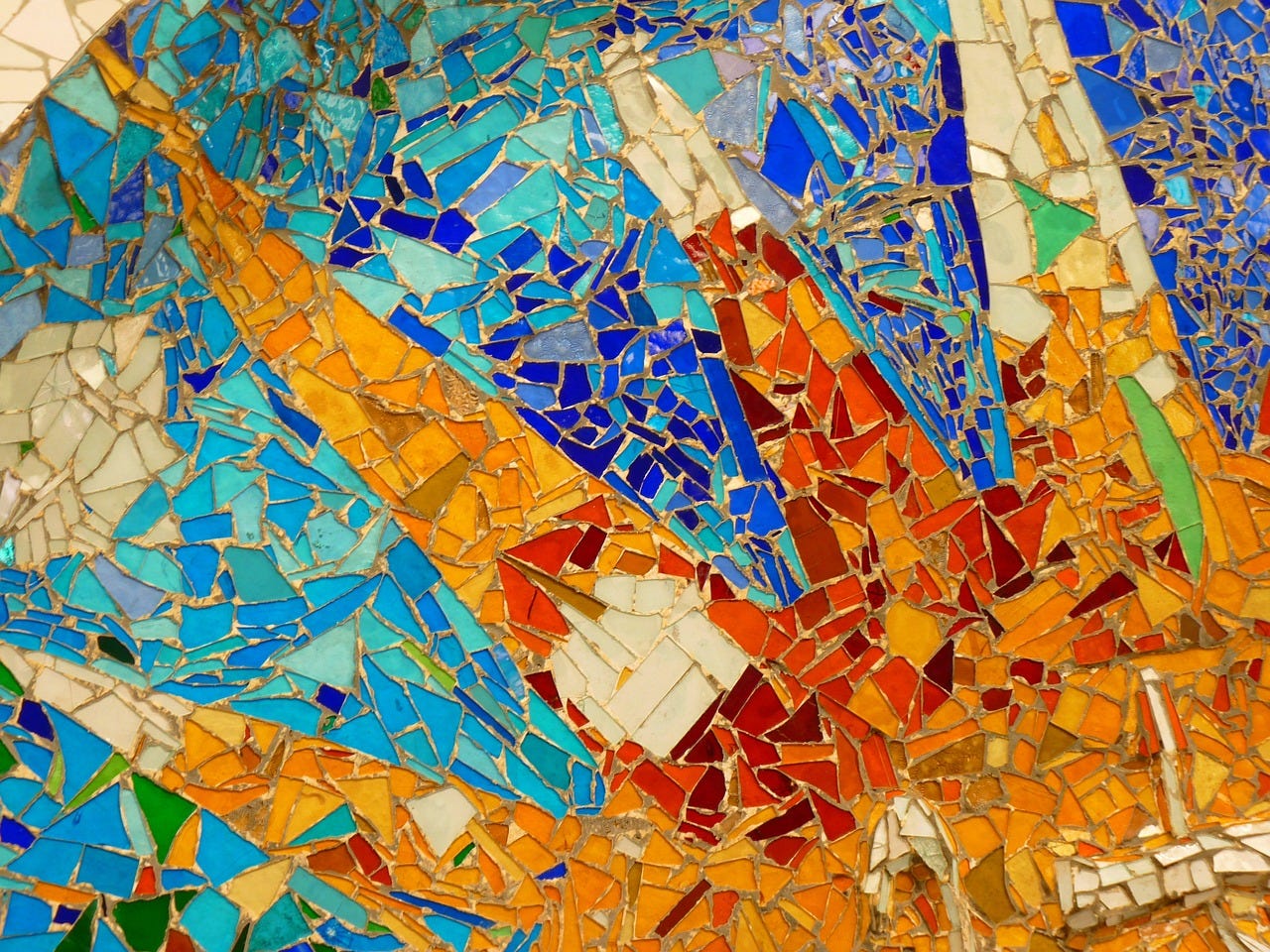
His most famous project is the Sagrada Família Basilica in Barcelona, which has been under construction for over 140 years. Gaudí worked on it for 46 years, beginning soon after his graduation thanks to his mentor’s personal recommendation.
When economic strife paused the project, he personally took to the streets to beg for funds. He said,
“My good friends are dead; I have no family and no clients, no fortune nor anything. Now I can dedicate myself entirely to the Church.”
He spent the last twelve years of his life solely on Sagrada Família — often sleeping there. He outfitted himself in worn clothing, ate frugally, and walked from place to place. Some people thought he’d lost his mind.
His Spark of Inspiration
One might assume that these drastic lifestyle changes were the result of depression or disillusionment. Yet while Gaudí lived with much loss, his choices were the result of a chosen spiritual asceticism — a more profound living of his faith.
The Gospel was ever on his mind.
We know this because he had developed a habit during work on Our Lady of Montserrat’s shrine; of praying the Rosary three times daily — meditating on the entire life of Christ from his miraculous conception to heavenly glory. Sagrada Família’s three facades reflect his mind, as each of them represent an aspect of Christ’s life according to the three sets of Rosary meditations existent in Gaudí’s lifetime; the Joyful, the Sorrowful, and the Glorious.
Gaudí knew that he would not live to see the church’s completion, so he chose to personally craft the statuary figures of one of the facades. He chose the Joyful facade, meticulously sculpting its story using abundant symbols of life and growth. As you view this photograph, imagine the sculptures colorfully painted, as their creator originally intended.
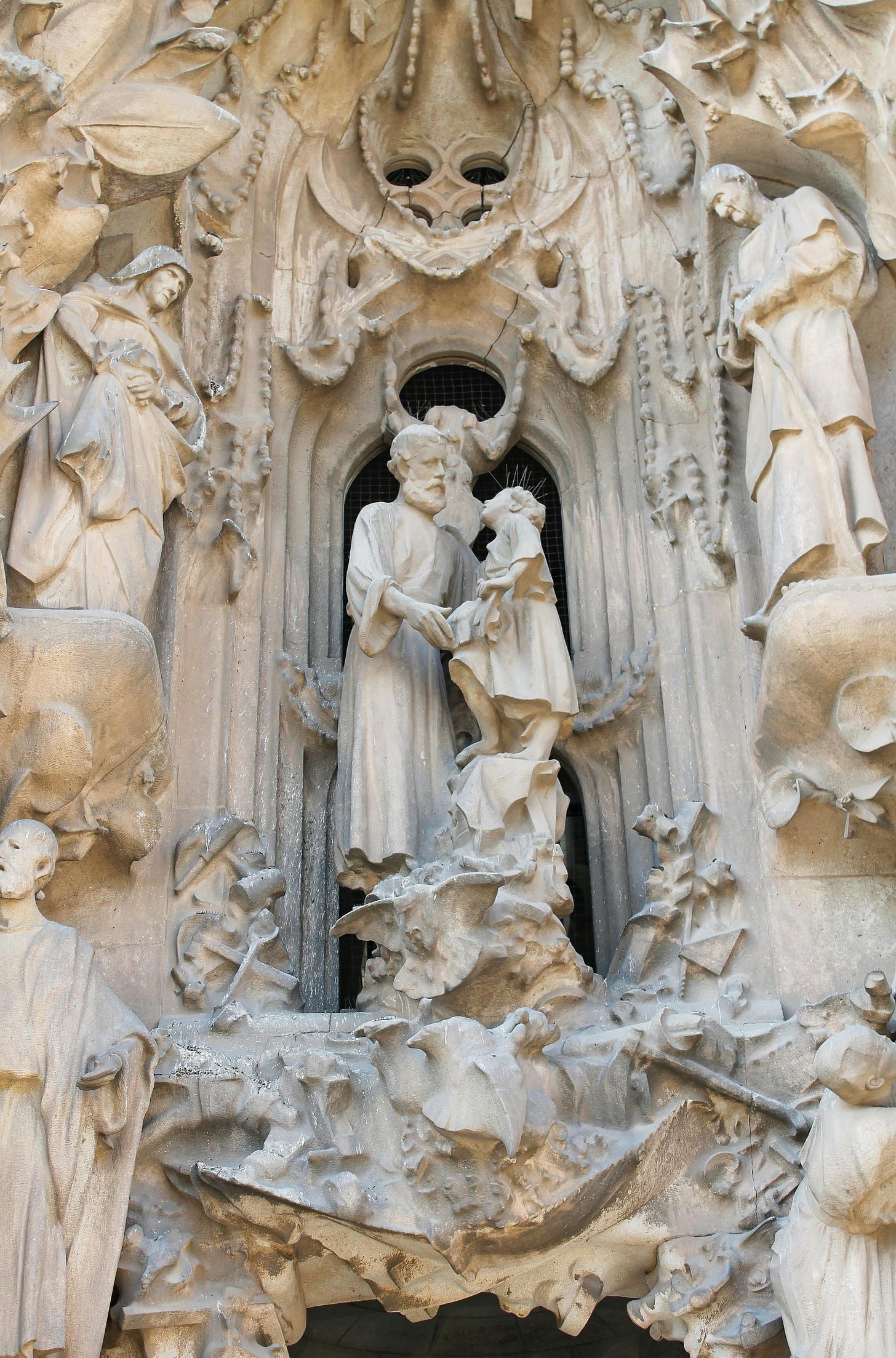
One could say that the practice of the Rosary marked the rhythm of Gaudí’s life. At his home in Park Güell (a property he designed and co-crafted), paths are lined by large spheres lying in the ground. These the architect would use to begin his day in prayer and reflection akin to large-scale rosary beads, ending at the cross spire marking the tallest point.
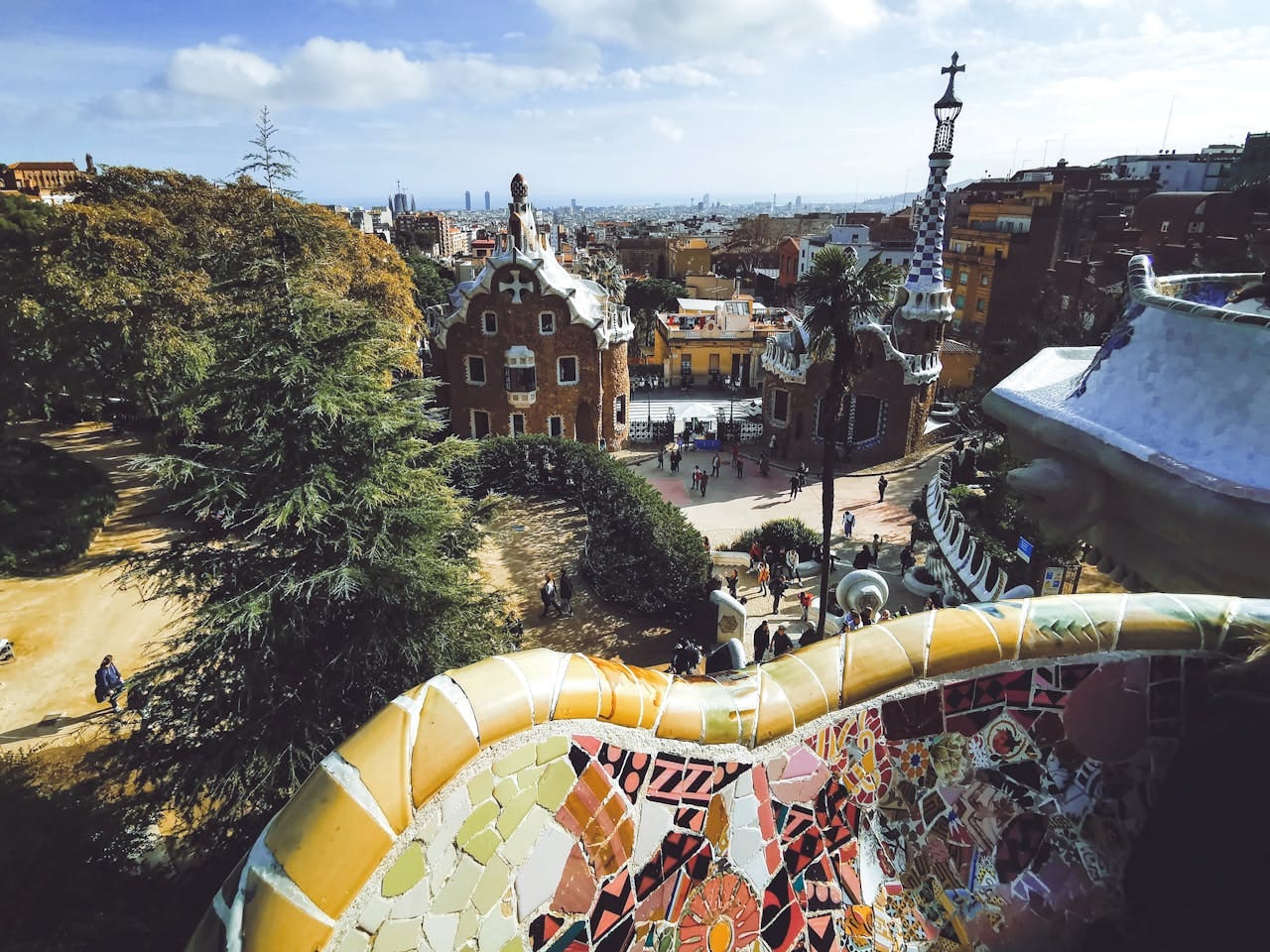
Atop his famous design, Casa Batlló, Gaudi’s beloved devotion can also be seen in the colorful rosary beads along the roofline.
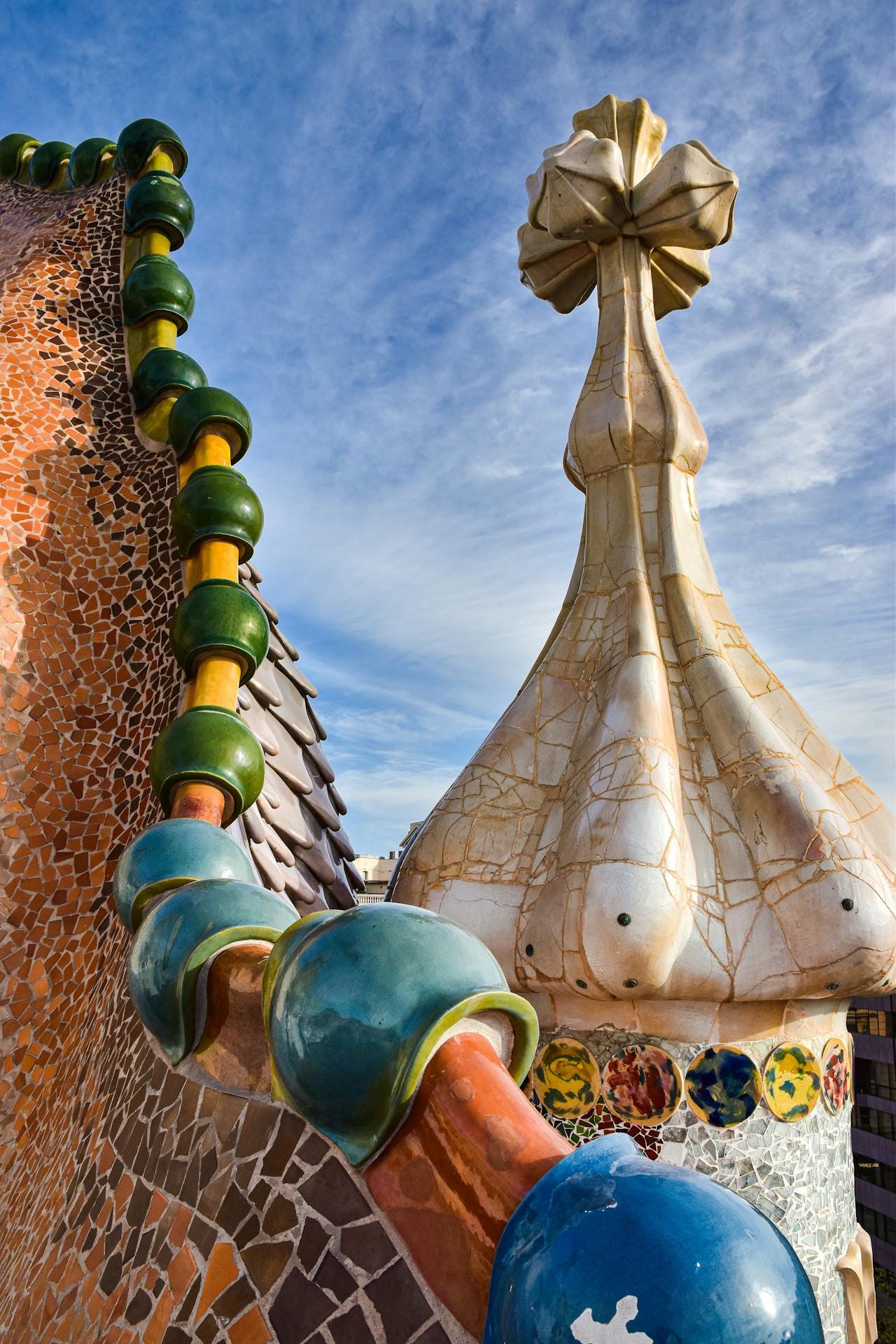
Without presenting an entire overview of his work (which would take much longer than we have in this letter), I would like to share a story about his later years, when he spent most of his day in the embrace of Sagrada Família.
In February 1916, the church hosted 250 pupils from his former primary school. Addressing the children, Mr. Gaudí — now in his mid-sixties — recalled the Marian devotional prayers he’d participated in while at the school, and how this practice had awakened in him the theological and spiritual awareness that he would later apply to his architectural projects. The students applauded and even cheered their accomplished alumnus’ recollections. Then, they all moved into the Crypt. The school rector provided Benediction with the Blessed Sacrament to all present, and together the students, faculty, and Mr. Gaudí sang the Marian hymn Salve Regina.2
The Accident
On the morning of June 7, 1926, while walking to St. Philip Neri Church for his usual time of prayer and confession, Gaudí was struck by a passing tram.
As he lay unconscious on the street, witnesses were slow to act, thinking he was a beggar. Finally, a police officer ordered a taxi to take the poor victim to the hospital. (It was later determined that he’d suffered the fracture of three ribs and injury to his skull, heart and stomach.)3
Several hours passed without his usual return. Friends and workers began a search for Gaudí. After learning that a man fitting his description had been hit in a traffic accident — a white-haired beggar with the Gospel in his pocket, they went searching First Aid and hospital locations, before arriving at Holy Cross Hospital. Everyone insisted that the famous architect was not present, but Gaudí’s friends continued pressing for information. Finally, a nun noted that an elder beggar with terrible wounds was laying in a certain bed, adding, “He had his clothes fastened with safety pins.”
Once Gaudí was identified, trauma doctors and other specialists began attending to this important citizen of Barcelona... one whose face had been unfamiliar since he’d avoided photographers throughout his life. Soon, journalists swarmed the area. Inside the hospital room, acquaintances took shifts attending to the poor man.
After a nod of his head in agreement, Gaudí was helped to sit up in bed, open his mouth, and receive Holy Communion for the final time. He quickly slumped back down in exhaustion.
By June 10, his condition was so serious that the prayers of his attendants changed, now asking God that Gaudí be close to his Creator at the moment of death. In the early evening, he whispered in Catalan, “My God! My God!” and passed away.4
Blessed are the poor in spirit, for theirs is the kingdom of heaven. (Matthew 5:3)
Inspiration
When Gaudí began work on Sagrada Família as a young man, he regarded it lovingly as a “church of the poor.” He wanted it to rise from the city as a testament to the One who lived in his heart, who animated his spirit, who sparked his imagination; who’d given the world such marvelous structures as the tree and such splendid music as birdsong; who’d chosen to live in the poor family of Nazareth.
By the time of his death, Gaudí had become poor like the One for whom he’d lived.
In 1978, a young and inexperienced Buddhist Japanese artist named Etsuro Sotoo traveled to Barcelona and saw Gaudí’s unfinished work. Intrigued, he applied for and received a position to work on its facade. Not long after studying and laboring so closely with the product of Gaudí’s imagination, Sotoo became Catholic to know the artist more profoundly. He reflects on his journey in this video vignette:
Gaudí’s life and work reflect the treasure of his heart. May we each strive after so great an accomplishment.
Angela
Rheumatism is the general term for a condition involving the inflammation of joints, muscles, and other tissues.




